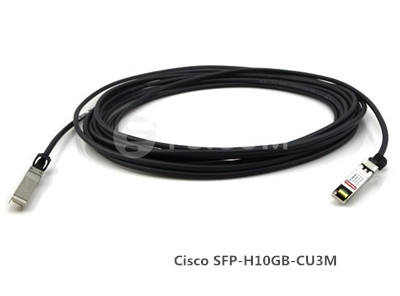According to a recent IDC report, data center power consumption continues to draw a lot of attention, which accounts for 40% of the operating expenses of a data center and the cost of this power has doubled in the last five years. Additionally, IDC estimates that data center power costs will equal server capital cost. These trends are driving the emphasis towards data center power efficiency.
Server virtualization is the key element in the next-generation energy efficient data center. It enables multiple virtual servers to run a single machine, helping companies to consolidate their data center infrastructure into fewer, high-density, high-efficiency facilities. Nowadays in order to support the data storage and retrieval requirements of multiple virtual servers, enterprises are driving the transition of data center interconnect speeds from the current 1 Gbps to 10 Gbps.
As 10Gbqs interconnect are ubiquitous in the data center, enterprises are turning to a low-cost, low-power, and space-efficient interconnect solution for the 10G short-reach links that dominate the data center environment. 10G interconnect within 7 m covers all connections between server cards and switches, typically mounted on a single data center rack, and a vast majority of inter-rack connections. The SFP+ Direct Attach Copper (DAC) is the 10G interconnect technology that matches these requirements, playing a vital role in enabling the next-generation power and cost-efficient data centers. Here is what you should know about SFP+ DAC cables.
What Is 10G SFP+ and its Advantages?
10G SFP+ is the advanced version of Small-form-factor pluggable (SFP). SFP is the industry standard for data rates up to 4 Gbps, while the recently standardized SFP+ MSA is the small form factor optical module for 10 Gbps. To achieve the SFP+ form factor reduction, only the optical-to-electrical and electrical-to-optical conversion functionalities occur inside the optical module. There are several types of 10G transceiver modules available on the market, such as XENPAK, X2, XFP and SFP+. The main advantage of SFP+ over the other 10G optical interconnects is the higher port densities enabled by its dimensions, and lower power consumption. Table 1 lists the dimensions and achievable port densities with different 10G optical module form factors.

SFP+ DAC Cable
SFP+ DAC cable replaces the 10G optical modules and fibers with passive copper cable connected with SFP+ connectors, which is identical to SFP+ optical module. It is the common sense that the price of two SFP+ transceivers required to support a duplex link is approximately 10 times the cost of a fully connectorized SFP+ Direct Attach cable. In addition, the optical SFP+ modules consume around 1W each, adding 2W per port to the overall system power budget and cooling requirements. That’s why to further reduce cost and power in interconnect distances of less than 7-10 meters, enterprises are turning to use SFP+ DAC cable for 10G interconnect. Figure 2 shows a Cisco SFP-H10GB-CU3M, which is SFP+ to SFP+ Passive Copper Cable within a distance of 3m.

Furthermore, data is transmitted as 10G serial NRZ symbols with transmit pre-emphasis and receive equalization compensating for Inter Symbol Interference (ISI) caused by the board trace and the copper cable. This choice of serial NRZ transmission over a passive medium makes SFP+ copper both a low power and low latency solution compared to its alternatives.
Compare SFP+ DAC Cable With 10GBASE-CX4 and 10GBASE-T
10GBASE-CX4 and 10GBASE-T are the other short-reach interconnect alternatives to SFP+ DAC cable. Obviously, SFP+ Direct Attach Cable has significant power, cost, and performance advantages over the other two standards as explained in the following part.
10GBase-CX4 achieves the aggregate rate of 10 Gbps by utilizing four independent cables, each fiber transmits at 3.125 Gbps. To achieve the above data rate, it typically requires eight twinax cables for a full duplex link. The bulkiness of the twinax cables makes cable management even more difficult, which becomes a significant limitation as the port densities and inter-port connection densities increase. What’s worse, the number of conductors make these cables expensive compared to SFP+ cables.
10GBase-T enables 10Gbps transmissions over Cat 6 and higher quality cables using complex signal processing and channel coding. The potential advantage of this technology is its extended reach. The extended reach and ability to enable structured cabling are not required for the short reach interconnects between servers and switches collocated in a rack. The disadvantages are its high power consumption and latency. The high latency in particular is a key limitation in latency sensitive data center and storage applications.
Conclusion
As enterprises are looking for energy-efficient data centers and higher-bandwidth applications, the requirement for a small form factor, low-power, low-latency and low-cost interconnect makes SFP+ DAC cable the optimal solution for short-reach 10G interconnects. SFP+ Direct Attach Cable also provides a low-cost upgrade path for higher speed (40G and 100G) interconnects. Fiberstore is a professional manufacturer for fiber optics covering optical communication product R&D, systematic solution and supply chain management. 10G SFP+ DAC twinax cables like MA-CBL-TA-1M, and optical transceivers including QSFP+, SFP, SFP+, XFP, X2, XENPAK, SDH, BiDi are also provided. If you have any requirement, please send your request to us.
评论
发表评论